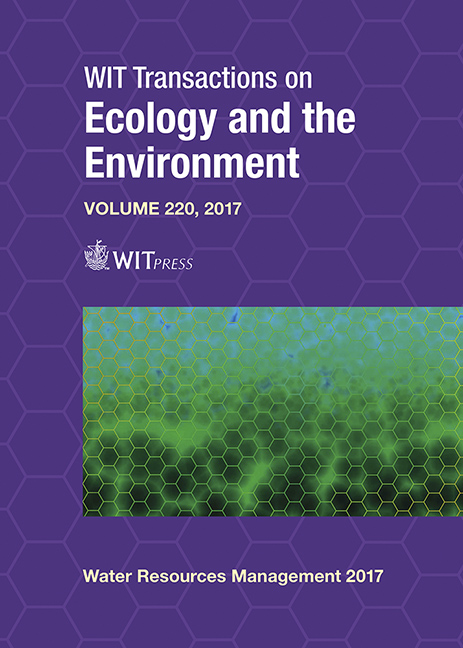AQUIFER DIAGNOSIS FOR SAN JOSE CHIAPA REGION, MEXICO
Price
Free (open access)
Transaction
Volume
220
Pages
12
Page Range
151 - 162
Published
2017
Size
474 kb
Paper DOI
10.2495/WRM170151
Copyright
WIT Press
Author(s)
MARGARITA TEUTLI, ANDRES SANCHEZ, GABRIELA VIDAL
Abstract
An aquifer diagnosis of San José Chiapa, Puebla and 7 surrounding towns was performed to set up a reference for water quality in towns nearby Audi the car maker factory. For this study 38 water samples were collected and characterized for 20 physicochemical parameters, obtained data were compared with two reference standards: drinking water and irrigation. In reference to the Drinking Water Mexican Standards it was found that 37% of the samples exceed the upper limit of pH (8.5), nitrite in 100% (limit value 0.05 ppm), cadmium 92% (limit value 0.005 ppm), and lead 79% (limit value 0.01 ppm). Otherwise, irrigation standards account for ionic content interactions, so far Sodium Accumulation Rate (SAR) represents a low risk for soil degradation by itself since 3% of the samples classify in the low–medium risk; but in presence of alkalinity adjusted SAR displaces 95% of the samples to a high risk classification, which means a threat for soil structure and permeability; a degree of restriction in water use can inferred from SAR-Electrical Conductivity (EC) data, results indicate a high restriction for 44% of the samples, and a low to moderate restriction in 32% of the samples. Exchangeable Sodium Percentage (ESP) accounts for Na, Ca, Mg, and K interactions, results indicate that 32% of the samples are facing expansion risk, and 13% face rupture of the soil matrix. Under Alkalimetric Co-efficient or Scott Index (ACSI) 42% of samples fall in a bad-mediocre quality. Interactions of ions under irrigation standards was confirmed by applying a Pearson’s correlation statistical analysis, in which it is found that correlation involving EC, Cl, SO4, Na, K, Ca, Mg fall in the range of strong to very strong (0.6–1.0), all these ions are involved in estimation of SAR, SAR ADJ, ESP and ACSI.
Keywords
aquifer diagnosis, irrigation water, industrialization, environmental risk





